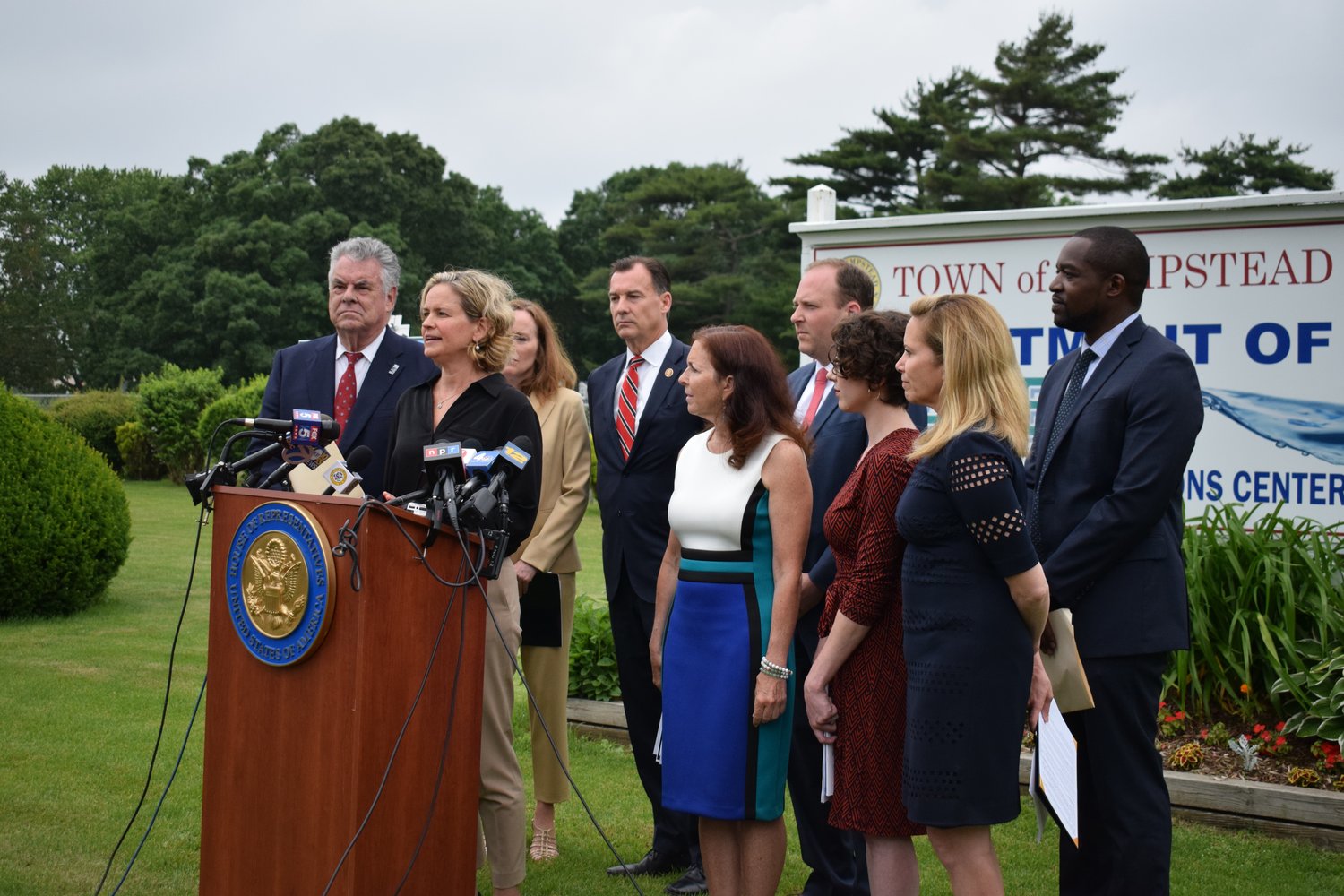L.I. congressional reps push for stricter water standards
Local and federal elected officials joined Long Island environmental advocates on June 18 to ask that the Environmental Protection Agency set stricter standards for the maximum contamination levels and remediation of 1,4 dioxane and other emerging contaminants.
U.S.Rep. Kathleen Rice — along with her colleagues Peter King, Tom Souzzi and Lee Zeldin — said they were concerned by a recent report from the New York Public Interest Research Group, which concluded that Long Island’s drinking water had the highest traces of 1,4 dioxane in New York state. The congressional representatives had sent a letter to the EPA about setting new standards in early June, but Rice said they have yet to hear back about this “critical issue.”
“We need the EPA to act with urgency to provide financial and technological support so that Long Island’s water systems can better address these emerging contaminants," the letter states.
Adrianne Esposito, executive director of the Farmingdale nonprofit Citizens Campaign for the Environment, explained that 1,4 dioxane, which can be found in household cleaning products, has been linked to several cancers and liver damage. Although the EPA lists 1,4 dioxane as a “likely carcinogen” and recommends no more than a .35 parts per billion presence in water supplies, it leaves each state to set contamination standards for the chemical.
While New York sets it at 5 parts per billion, Esposito said the Town of Hempstead Water Department sees the chemical appearing at 10 parts per billion, and at 12 parts per billion in the Western Nassau County Water Authority’s district. “Long Island is in a drinking water crisis … and we need the EPA’s support to fund local remediation efforts.”
Local leaders said that funding and regulation from the EPA would compliment New York’s recent $200 million budget to tackle the issue. Local water providers had previously estimated adequate water treatment systems for 1.4 dioxane and other emerging contaminants to cost more than $800 million.
Town of Hempstead Supervisor Laura Gillen added that additional funds to treat 1,4 dioxane in the town was included in this year’s budget plan. She agreed that action from the EPA and New York state would benefit the treatment and upkeep of all the 32 wells and 17 water treatment sites in the Town of Hempstead and prevent possible future health problems for local residents.
“Our residents have the expectation that when they turn on their tap water, it’ll be clean and safe to drink,” Gillen said. “Every day that we don’t take action is another day lost treating our water.”
Update: An Environmental Protection Agency spokesperson said the organization "appreciates the congressional delegation’s interest and commitment to the community, and that the EPA shares that commitment to protect public health and the environment, and we are working to develop a response to the members."

 47.0°,
Mostly Cloudy
47.0°,
Mostly Cloudy 




